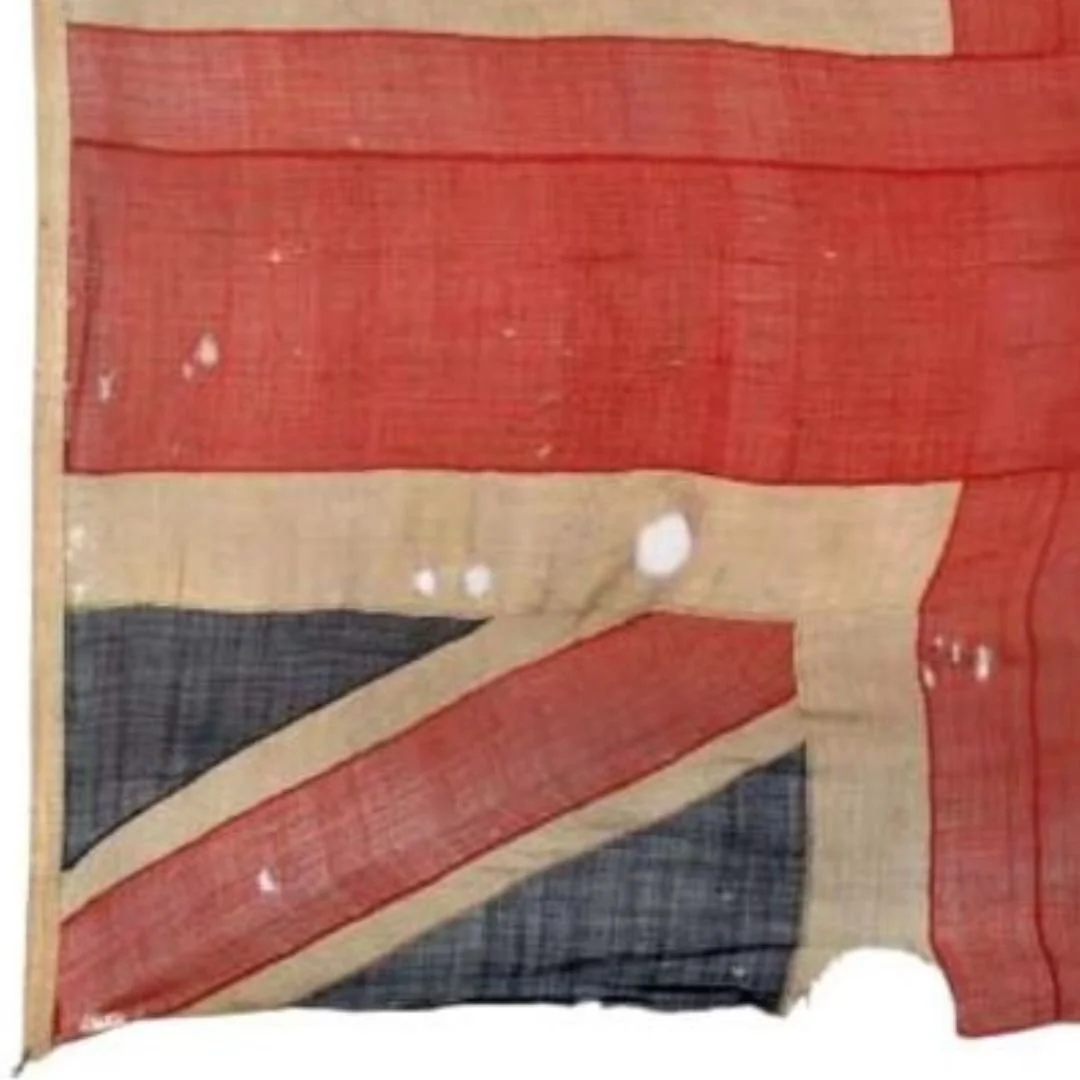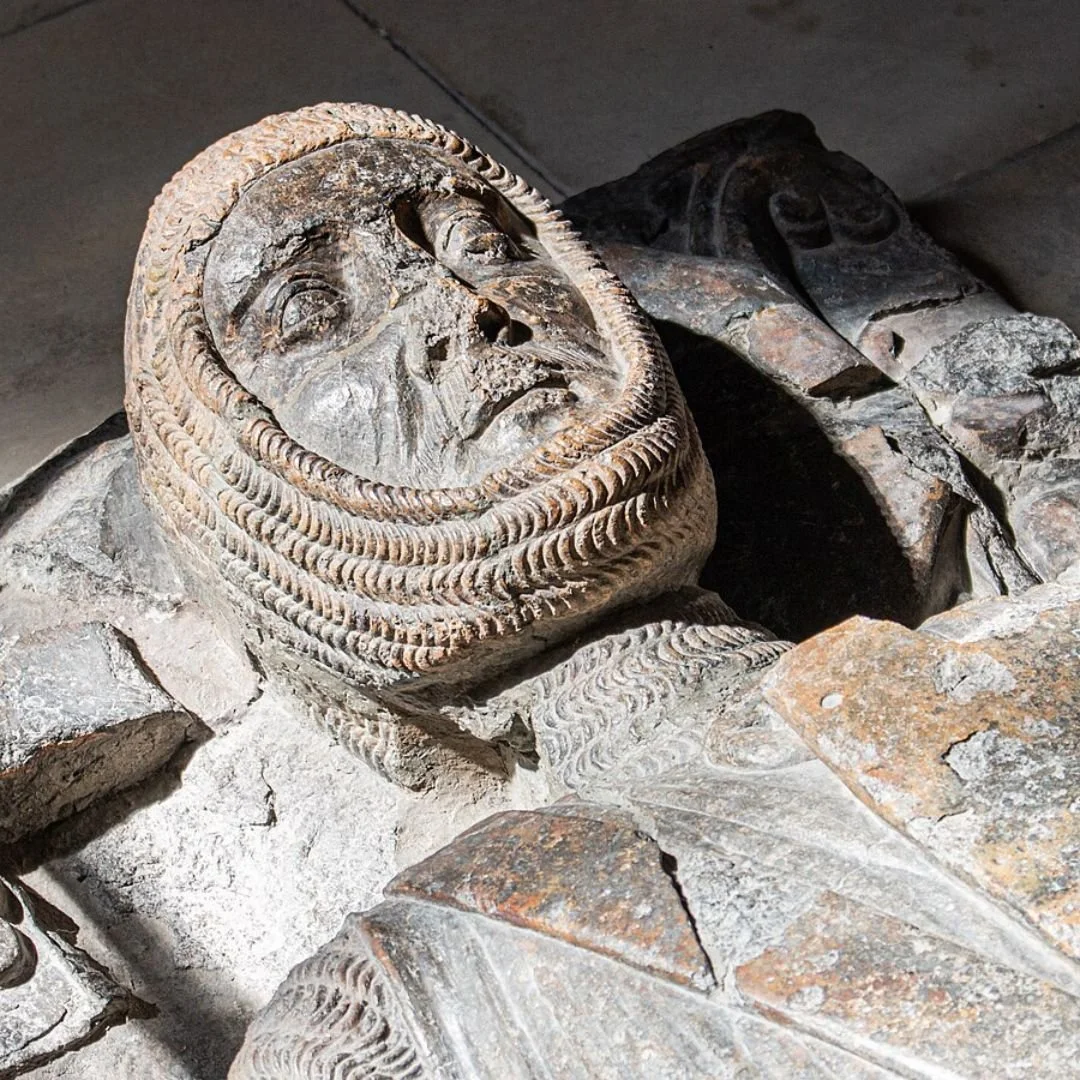The Union Jack of HMS Spartiate at Trafalgar
This remarkably intact Union Jack survived the Battle of Trafalgar, 220 years ago.
Although the Union Jack was typically reserved for ships in port, Admiral Horatio Nelson issued a critical order: "When in presence of the enemy, all the ships under my command are to bear a Union Jack."
On October 21, 1805, the thunder of cannon fire over the Atlantic Ocean signalled one of the most decisive naval engagements in history: the Battle of Trafalgar.
While the crushing British victory secured naval supremacy for a century, the battle also tragically claimed the life of the nation's hero, Vice-Admiral Horatio Nelson.
In the middle of the carnage, a distinctive, slightly flawed piece of fabric flew proudly from one of the participating ships, HMS Spartiate, and its journey since has woven a fascinating tale of capture, command, and lasting commemoration.
The Union Flag, the iconic symbol of Great Britain, was typically reserved for flying as a jack (a small flag flown from a jackstaff at the bow of a warship) primarily when in port.
However, in the tense buildup to confronting the combined French and Spanish fleet, Nelson issued a specific, powerful order on October 10th, 1805, designed to ensure clarity and unity in the heat of battle:
“When in presence of the Enemy, all the ships under my command are to bear White Colours and a Union Jack is to be suspended from the foretopgallant stay.”
This order ensured the fleet's identity was unmistakable and elevated the Union Jack to a position of high visibility on every ship, signalling their collective commitment under Nelson's command.
The flag, now residing in the private American Zaricor Flag Collection, is the very Union Jack that honoured this order aboard the 74-gun ship of the line, HMS Spartiate, eleven days later.
Measuring a substantial 223.5cm x 355.5cm and constructed from wool, the Spartiate's flag holds a surprising secret: it is technically incorrect.
As is common with handmade flags from the period, the arms of the saltires (the 'X' shapes of St. Patrick and St. Andrew) are not properly counter-changed, meaning the diagonal stripes are not interwoven and layered correctly to show precedence.
This vivid imperfection reminds us that these historical artefacts were not mass-produced according to rigid modern standards.
They were items of utility and handiwork, imbued with human error and unique character, yet they served their symbolic purpose perfectly when it mattered most.
The story of the Spartiate itself is as remarkable as the flag it flew. Ironically, the formidable 74-gun ship was originally French.
She had been captured by the British at the Battle of the Nile in 1798, an engagement during which her ordnance had the devastating effect of blinding Nelson in one eye.
The presence of the captured Spartiate in the British line at Trafalgar symbolises the tide of naval power during the Napoleonic Wars.
It was a potent message: the strength of the enemy's navy could be turned against them.
Following the resounding victory at Trafalgar and the national mourning that followed Nelson's death, the imperfect Union Jack gained its personal, enduring significance.
The flag was awarded to Lieutenant James Clephan (1768–1851) of the Spartiate.
Clephan's personal journey mirrors the dramatic lives of many men in the era's Royal Navy.
A native of Fife, he had been press-ganged into service at the age of 26.
His performance during the Battle of Trafalgar, however, was clearly exemplary, leading to his immediate appointment as First Lieutenant upon the action's conclusion.
Clephan would eventually rise to the rank of Captain.
Lieutenant James Clephan
The Union Jack remained a cherished family possession within Clephan’s line for over two centuries until 2009, when it was finally sold at auction, eventually making its way to the Zaricor Flag Collection in the United States.
Recently, in July 2025, it sold at another auction in London for a spectacular £1,068,500.
The item was sold to a private collector who participated via telephone bidder - this is a common practice in high-value auctions to maintain the anonymity of the purchaser
However, that doesn’t make it the most expensive flag ever sold - the most valuable battle flag ever sold is a Stars and Stripes from the United States Revolutionary War that was auctioned for £12.3 million in 2006.
The fact that the flag was sold again in 2025 suggests that the final plan for display or repatriation did not fully materialise, and it remained in private hands (the Zaricor Flag Collection) until the recent sale.
The final buyer of the £1 million flag may be another international private collector.
How Britain won the Battle of Trafalgar
The warlord famous battle was a product of superior tactics, the skill and training of the Royal Navy, and the confident leadership of Vice-Admiral Lord Horatio Nelson.
Facing a numerically superior combined fleet of 33 French and Spanish ships to his 27, Nelson boldly abandoned the conventional naval strategy of fighting in parallel lines.
Instead, he divided his fleet into two columns, one led by his flagship, HMS Victory, and the other by Vice-Admiral Collingwood, and ordered them to sail perpendicularly toward the enemy's single line.
This unconventional and risky approach, which became known as the "Nelson Touch," was designed to break the enemy's formation into isolated sections and force a decisive, close-quarters melee.
The initial stage of the attack was the most dangerous, as the British columns approached the enemy line head-on, exposing their bows to the concentrated raking fire of the Franco-Spanish fleet without being able to return fire effectively.
Lord Nelson
However, Nelson's calculated gamble was founded on the vastly superior gunnery of his crews.
Years of rigorous sea service and constant drill, often spent blockading French ports, meant British gunners were able to fire their cannons much faster and more accurately, up to two or three times the rate of their opponents, many of whom were poorly trained conscripts.
Once the British ships successfully broke the enemy line, the battle devolved into a chaotic, ship-to-ship mêlée where the British advantage in rapid, precise fire and expert seamanship proved overwhelming.
The result was a crushing and decisive victory for Great Britain.
By the end of the day, the British had captured or destroyed 18 enemy ships without losing a single vessel of their own.
Although the victory was tragically overshadowed by the death of Lord Nelson, who was mortally wounded aboard the Victory, the triumph had immense strategic consequences.
It ended all possibility of Napoleon launching an invasion of Britain and cemented the Royal Navy's status as the undisputed ruler of the seas for the next century, fundamentally securing Britain's global position and its role in the defeat of Napoleon's France.
Rule Britannia.
If you enjoyed this blog post, please follow Exploring GB on Facebook for more!
Don’t forget to check out our latest blog post below!
Thank you for visiting Exploring GB.



















